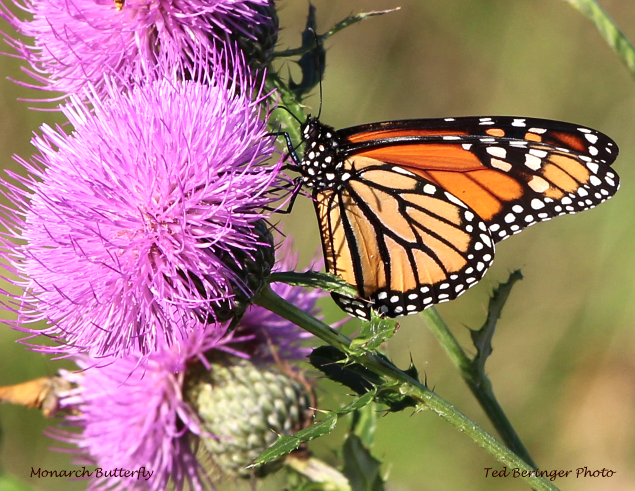The U.S. Department of Agriculture and U.S. Department of the Interior Issue a Draft Document to Help Pollinators on Federal Land.
Pollinator Guidelines for Federal Land could be a valuable blueprint
for use on state & private land as well.
by Ted Beringer
It is difficult to overestimate the economic value of pollinators to agriculture. Honeybees and native pollinators add over $18 billion to the value of agricultural crops including oranges, grapefruit, apples, plums, peaches, nectarines, blueberries, avocados, onions, pumpkins and almonds annually not to mention the honey they produce. They also pollinate more than 80% of wildflowers and thereby critically enhancing biodiversity. Not only have honeybees been decimated by “Colony Collapse Disorder”, they are being poisoned by pesticides applied to crops during their blooming period. In addition, although Monarch butterflies are not as important agriculturally, they have also been decimated by destruction of habitat, including the decline of many varieties of milkweed that are obligate host plants for survival of their larvae. Many wildflowers can produce nectar for adult Monarchs but their larvae (caterpillars) develop from eggs the Monarch deposits exclusively on milkweed plants.
Recognizing the importance of pollinators to agriculture and to biodiversity in the environment, President Obama issued a memorandum (June 20, 2014) directing Federal departments and agencies to expand knowledge of pollinators and to increase both the quality and quantity of their habitat on federal lands. In compliance (May 11th, 2015), the U.S. Department of Agriculture and U.S. Department of the Interior created a draft document entitled Pollinator-Friendly Best Management Practices For Federal Lands.
The following is a brief summary of that draft. This initiative promotes common sense actions intended to compensate for widespread destructive practices harmful to pollinators and their habitat.
1) Determining the Quality of Wildflower-rich Foraging Habitat: Effective habitats provide a variety of native flowering plants that exhibit overlapping bloom times to supply nectar and pollen during spring, summer & fall. It is imperative to modify mowing regimes to maintain wildflowers and avoid destroying pollinators while they are visiting those plants. Frequent mowing ultimately eliminates all wildflowers from the landscape.
2) Determining Important Nesting and Overwintering Sites: Since most native bees are ground nesters, they require untilled, unmulched ground that is also well drained and not compacted (especially by heavy mowing machinery). Since many native bees do not fly long distances, nest site habitat should be close to foraging habitat. For cavity-nesting bumble bees, however, queens need soft humus and loose soil, or unobstructed underground holes and tunnels to overwinter.
3) Providing host plants for butterflies and moths often requires specific plant species as larval host plants. [For example, butterflies like the Red Admiral and Comma butterfly depend upon a small number of host plants called nettles e.g. wood nettle, false nettle & Stinging Nettle. If important host plants are not available or have been destroyed, develop a planting program to reestablish the host plants. For Monarch butterflies in Kansas plant swamp milkweed, butterfly milkweed and common milkweed. The Xerxes Society also suggests Antelope horn milkweeds, tall green milkweed, Showy milkweed, Prairie milkweed and Whorled milkweed for Kansas.]
4) Restoration and Rehabilitation of Monarch Habitat includes Removal of Invasive Species: For instance, nonnative garlic mustard (containing toxins that can kill the larvae when they hatch and begin feeding on the plant) must be removed. In its place, local native seeds can be collected and utilized to reestablish native species required by pollinators. Riparian areas, including those around springs, seeps and streams, can provide diverse pollinator habitat.
5) Engaging and Educating the Public: Public education is a critical component for achieving success.

